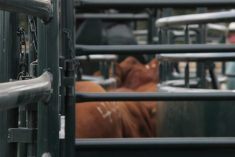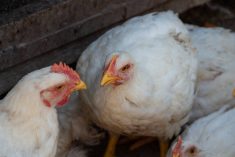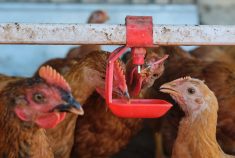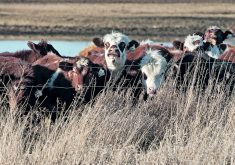April 6 — Feeder cattle prices in Western Canada were steady to $2 per hundredweight (cwt) higher last week while U.S. prices were $2 to $4 higher.
The feeder market had a firmer tone after the U.S. Department of Agriculture’s prospective plantings and stocks report. U.S. farmers intend to seed 88.798 million acres of corn in 2010, up from 86.5 million in 2009. At the same time, U.S. corn stocks as of March 1 were 7.694 billion bushels, nearly 200 million more than traders expected.
Feedlots will have plentiful feedgrain supplies for the remainder of the 2009-10 crop year, and barring adverse weather, the upcoming crop will also result in burdensome fundamentals for next year. Canadian farmers will likely cut back on barley acreage but with the larger U.S. corn crop and increased imports of DDGS (dried distillers grains with solubles), this is not a concern.
Read Also

CFIA adds controls for imports of Spanish feed ingredients after African swine fever outbreak
The Canadian Food Inspection Agency (CFIA) has added Spain to a list of countries subject to feed import controls due to an outbreak of African swine fever in that country.
The U.S. cattle and beef complex is on fire and it is only a matter of time before this enthusiasm spills over into the western Canadian feeder market.
CME feeder cattle futures are making new highs this week on improved feedlot margins and tighter available supplies. This bullish fundamental structure should start to pull excess supplies of Canadian feeder cattle.
During 2007, the Canadian dollar traded at a premium to the U.S. greenback and feeder exports were very strong due to the health of the U.S. industry. I feel we are heading to a similar price structure as exports improve later in the year.
Canadian feedlot talk reflects that feeder cattle quality is quite variable. Some animals look too fleshy and are not hungry. Below-normal precipitation in parts of Alberta and Saskatchewan has reduced demand for grass cattle. However, demand for lightweight cattle is quite strong because the fourth-quarter fed cattle market has potential to reach historical highs. (See Table 1 below.)
— Jerry Klassen is a commodity market analyst in Winnipeg and maintains an interest in the family feedlot in southern Alberta. He writes an in-depth biweekly commentary, Canadian Feedlot and Cattle Market Analysis, for feedlot operators in Western Canada. He can be reached by email at [email protected] or at 204-287-8268 for questions or comments.
The material contained herein is for information purposes only and is not to be construed as an offer for the sale or purchase of securities, options and/or futures or futures options contracts. While the information in this publication cannot be guaranteed, it was obtained from sources believed to be reliable. The risk of loss in futures trading can be substantial. The article is an opinion only and may not be accurate about market direction in the future. Do not use this information to make buying or selling decision because adverse consequences may occur. This information may be wrong and may not be correct about current market conditions in all areas of Canada. This is an opinion only and not based on verified facts.
Table 1. Feeder steers, US$ per cwt., week ending April 1.
| Weights (lbs.) | Alta. | Sask. | Man. | Neb. | Kan. |
| 500-600 | 117 | 115 | 113 | 120 | 125 |
| 600-700 | 108 | 105 | 101 | 110 | 117 |
| 700-800 | 99 | 98 | 95 | 99 | 107 |














